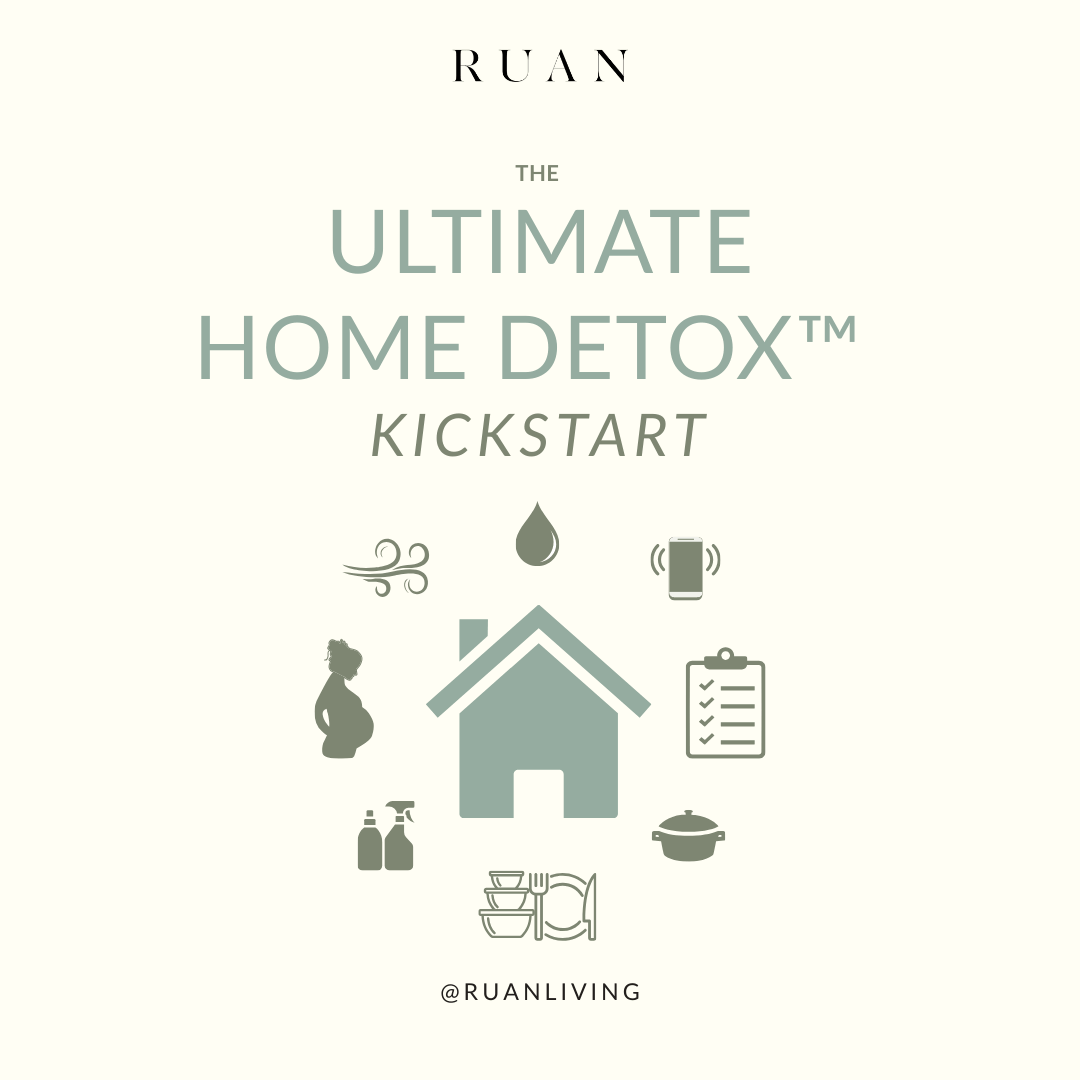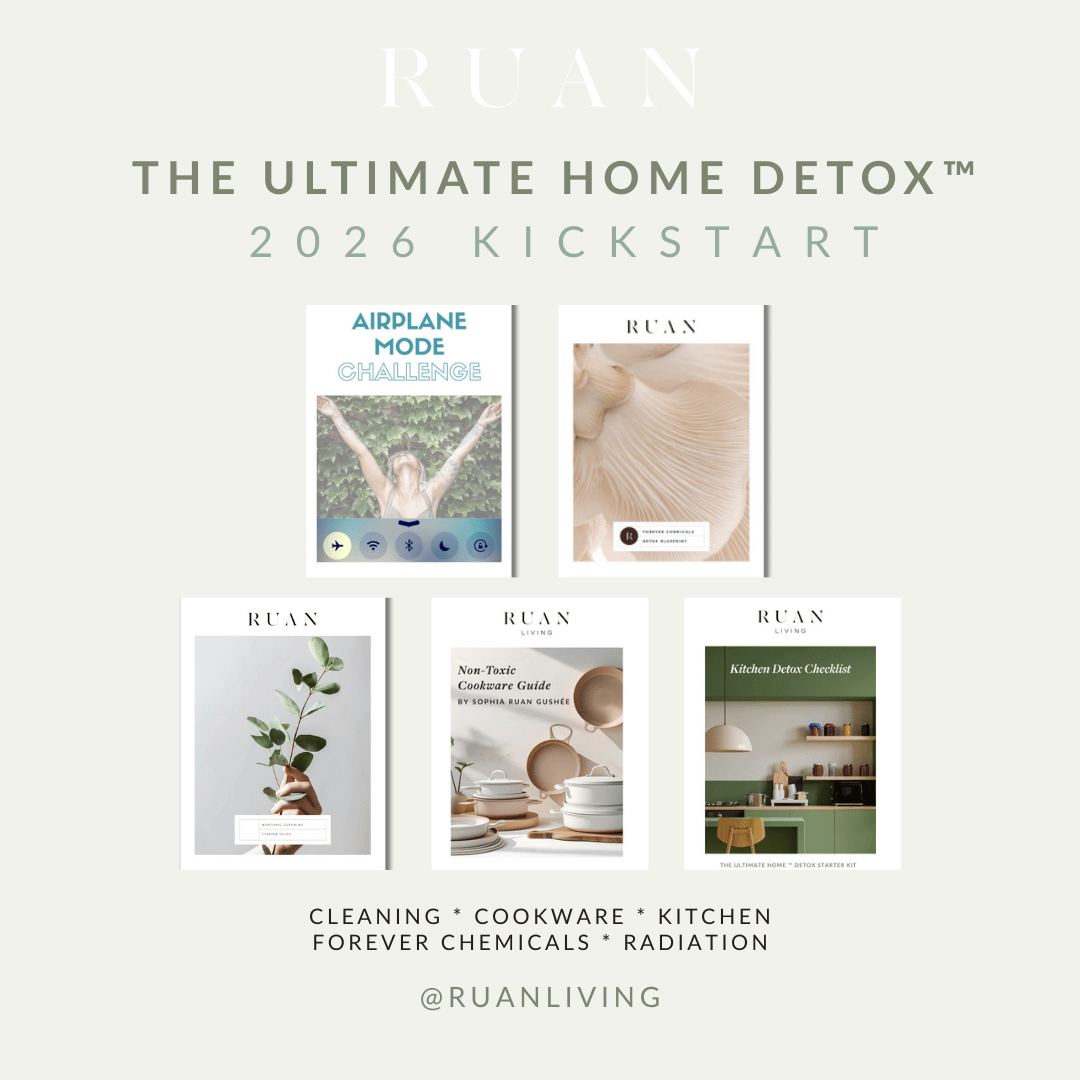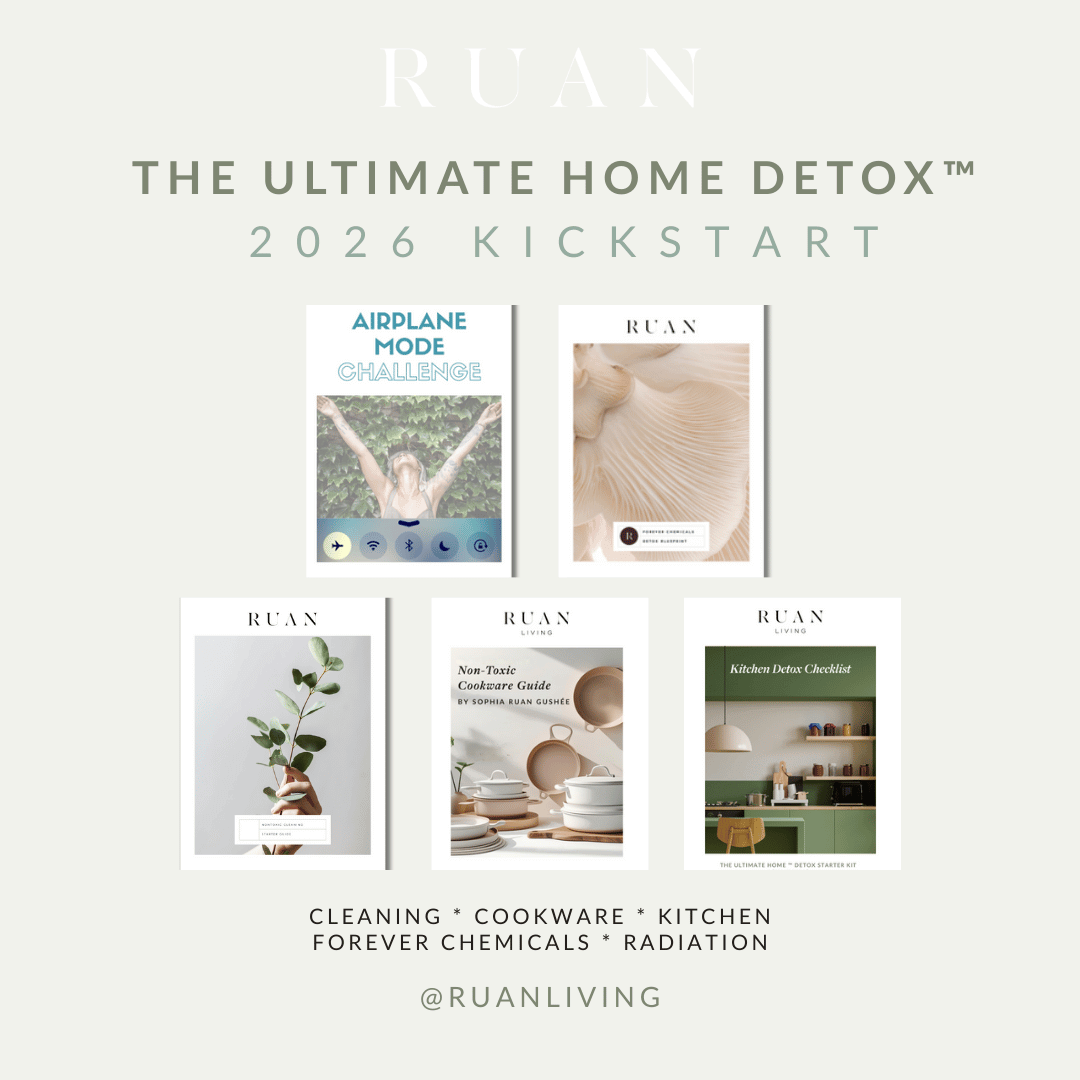
The Pros and Cons of Ceramic
Aug 24, 2018by Angela Cummings and Sophia Ruan Gushée
Ceramic is generally considered among the healthiest materials used throughout the home, from cozy warm mugs to tiled flooring.
“Ceramic” is a material made from clay that has been heated. It is a category that includes pottery, earthenware, terracotta, stoneware, porcelain, fine china, bone china, paper clay, etc. as subcategories. The names indicate different materials used to make the ceramic.
I've always been uncomfortable with using ceramic. Finishes on ceramics can be glazed or painted, and the ingredients of the glaze or paint may pose health risks. Painted ceramic can contain lead in the paint or glazes so be sure to look for ceramic that is lead-free(1).
Personally, I avoid using ceramics, especially to contain or prepare foods and drinks. But I still use ceramics because sometimes it's the best option given my overall considerations.
Pros and cons of ceramic
Ceramic is generally nonporous and, often considered a nontoxic product. Often, it is reported to be a safe material for human health.
1. Can be made from nontoxic and toxic ingredients
Ceramic is often made with clay and non-metal materials that are heated at high temperatures. Some types of ceramic may be made from clay and water, while other types, like porcelain, may be made from clay, quartz, and water(2). Historically, the materials used to make ceramic have been considered to be relatively nontoxic. However, ingredients for ceramics vary, and the manufacturing of ceramics has changed to include nano-materials, which makes me nervous.
Nano-materials are made of particles so small that they may penetrate the skin and travel throughout our inner environments, including the blood-brain barrier. Some formulations and uses may be safe. But, they are such an innovative technology that it's hard to know right now.
Nanotechnology-enabled products are quietly proliferating on U.S. store shelves, despite nagging questions about the safety of synthetic nanoparticles and the products that contain them. “[I]n our regulation of food and most consumer products, we don’t implement the precautionary principle. Things go to market before we know whether or not they’re really safe for human beings over the long term,” says Alexis Baden-Mayer, a lawyer with the Organic Consumers Association, an advocacy group, who attended the meeting and campaigned for the ban.
--Rebecca Kessler for her 2011 article "Engineered Nanoparticles in Consumer Products: Understanding a New Ingredient" in Environmental Health Perspectives
In addition, lead has been found in some ceramic coatings.
2. Considered heat-friendly
Ceramic can be heated in the microwave, stove, or oven without melting, softening, or breaking down like plastic does(3). Not all ceramic can be used in all three ways, so follow the manufacturer's instructions for the proper use of that particular ceramic item.
3. May not off-gas VOCs
Ceramics are reportedly not made from chemicals in the Volatile Organic Compound (VOC) family. Hence, ceramics are believed to not contribute VOCs to your home. According to the U.S. Environmental Protection Agency, the number one way to improve indoor air quality is to eliminate the source of indoor air pollutants(4). By choosing ceramic household products, like ceramic floors or tiles, you may reduce your indoor VOC levels, which may improve the overall indoor air quality.
4. May reduce chemicals leached into your food(5)
Ceramic is a hard surface that is often non-porous, which is defined as “not permeable by water, air or other fluids”(6). Reportedly, it does not usually leach or absorbs chemicals, which is often interpreted to mean that chemicals aren’t leaching into your food (like they can from some plastics).
5. Does not contain vinyl or plastic
Chemicals found in vinyl and plastic have been linked to adverse effects on health and indoor air and dust. These chemicals can come from products like flooring, food storage containers, and many other household and building products(7). Some ceramics, on the other hand, may not contain chemicals, and the final product may be a healthy option(8).
What household products come in ceramic?
Household products are available in ceramic varieties ranging from kitchenware to collectibles, to building materials. With such a wide range of ceramic products, you can start just about anywhere! Here are a few good items to start with:
1. Dishes and mugs
Colored dishes and funny mugs can be made from ceramic. Want sleek white instead? Ceramic can be sleek or classy, too. Most major department stores have ceramic dishes and mugs on hand year-round making them easy to find.
2. Food storage
Ceramic bakeware and cookware can double as food storage containers. Some ceramic cook and bakeware brands come with a ceramic or glass lid, while other brands sell the lids separately. If you use cookware or bakeware for storage after cooking, be sure the container is fully cooled. Ceramic will break with extreme changes in temperature.
Alternatively, ceramic food storage containers (not bake or cookware) can be a great alternative to plastic storage containers. Ceramic storage can come with a plastic, silicone, or glass lid depending on the brand purchased. To minimize leaching of threatening chemicals, favor ceramic containers with a glass lid for at-home food storage, and ceramic containers with a tight-sealing, silicone lid when traveling.
3. Coffee makers
Ceramic coffee makers come in “pour over” or “ceramic drip” styles. In both cases, the coffee brewing process involves boiling water in a tea kettle or pot and then pouring the hot water over the coffee grounds. Water can be boiled in a ceramic pot, however, it does take longer for the water to boil since ceramic pots cannot be used with high heat (or else they break).
4. Ceramic cookware and bakeware
In addition to using ceramic pots and pans for boiling water, they can be used for cooking refrigerated, or room temperature foods, such as meats and fresh vegetables. Bakeware can be used to make casseroles, veggie dishes, and meat dishes. Some ceramic can be used on the stovetop for cooking and others are strictly for baking in the oven. Check manufacturer instructions for the intended use of their product and guidelines to follow when using their product.
Some potential cons to ceramic cookware include:
- The coating may be prone to chipping or cracking. With proper use and care, ceramic cookware generally lasts around three years.
- Non-stick properties tend to decline over time. And may deteriorate more quickly in less expensive ceramic cookware.
- Similar to cast iron and stainless steel pots and pans, metal utensils can harm ceramic coatings. Silicone or wooden spatulas and spoons are better utensils to use.
- Strong dishwashing detergent can wear out the non-stick surface. So hand washing is required (as is also true for cast iron pots and pans).
- Inferior ceramic coatings have low thermal resistance and are oven safe up to 350°F.
5. Ceramic pottery
Pottery can be both artistic and functional. Use dishes, mugs, and bowls made out of ceramic when entertaining for that little extra flair to table settings or serving stations. Painted pottery can contain lead that is sometimes found in the paint. Make sure that the pottery you purchase is lead-free.
6. Flooring
One of the benefits of ceramic tiles in flooring is that it provides a durable healthy option for any room in the house. Typically found in kitchens and bathrooms, ceramic flooring comes in thousands of colors and styles—even in a wood grain style. In the colder regions of the U.S., ceramic tile flooring can be chilly on the feet. Homeowners can have radiant heat installed under the tile floor to keep the floor warm in the winter months. For those who are sensitive to electromagnetic fields, however, you may want to avoid adding electrical circuits and use them in your home.
7. Shower tile
Instead of installing fiberglass or module shower units, opt for a tiled shower surround. Similar to ceramic tile flooring, shower tile comes in a wide assortment of styles and colors. Decorative ceramic tile railings and boarders can add to the pizzazz of your bathroom and shower walls.
When used throughout your home, ceramic can make for a practical and artful collection of durable nontoxic household products. Coupled with the added bonus of not contributing negatively to indoor air quality and health, ceramic is one of the best materials for household products. How can you go wrong with that?!
Enjoy Support for Practical Nontoxic Living!
Curious which specific brands of products our nontoxic living expert, Sophia Ruan Gushée, uses? Hire her to help you more quickly figure out your detox plan. Check out her programs at the D-Tox Academy to detox your home and life at a pace that’s comfortable for you. The academy includes micro-lessons—short videos and checklists—to help you jumpstart easy tweaks you can make for a healthier wellbeing.

References
(1) A to Z of D-Toxing Works Cited Parts 3 and 4
(2) TCNA
(3) Princeton University Environmental Health Safety
(4) US EPA
(5) EWG
(6) Dictionary.com
(7) A to Z of-D-Toxing Works Cited Part 1
(8) Safe Chemicals Healthy Families
(9) NPR



